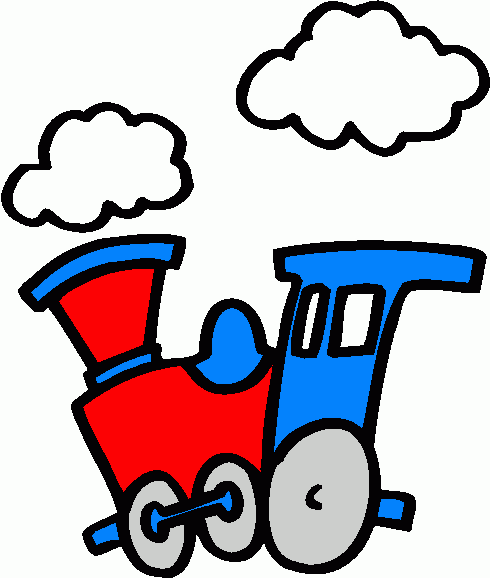
Miss MacLachlan's
Lesson Designs
Beginning Reading
CHUG ALONG WITH CHOO CHOO TRAIN
Beginning Reading
Kelly MacLachlan
Rationale:
This lesson will help children identify the consonant digraph ch=/ch/. In order to be able to read, children must learn to recognize the spellings that map word pronunciations. In this lesson, children will learn to recognize, spell, and read words containing the spelling ch. They will learn a meaningful representation (bend arm and pump like a train whistle or choo choo), and they will spell and read words containing this spelling in a Letterbox lesson, and read a decodable book that focuses on correspondence ch=/ch/.
Materials:
Graphic image of choo-choo train; cover-up critter; individual whiteboards and dry erase markers; classroom smart board; letter manipulatives for each student and smart board letters for teacher: a, b, c, d, e, h, k, l, n, o, r, s, t, u,; list of spelling words on poster to read: 3 phoneme word: chat, 4 phoneme words: lunch, chunk, bench; decodable text: Lewis, Kevin. Chugga-Chugga Choo-Choo. 2001. and assessment worksheet (in references)
Procedures:
-
Say: In order to become expert readers, we need to learn the code that tells us how to pronounce words. We have already learned the sounds of the short vowels and consonants, like how we know how to say the sounds of c and h in the words cat and hat, and today we are going to combine those letters to learn the ch sound! When I say /ch/, I instantly hear a choo-choo train chugging along the tracks! (show graphic image).
-
Say: Before we learn about the spelling of /ch/, we need to listen for it in some words. When I listen for /ch/ in words, I hear the beginning of the choo-choo train, ccchhh-oo ccchh-oo, and I notice that my teeth are clenched together and my tongue goes to the back of my top teeth. The consonant digraph ch is in church. Oh wow! It’s at the beginning and the end of church. Now, I’m going to see if it’s in clock. Hmm, I didn’t hear the beginning of the choo-choo train and my teeth didn’t clench together. Now you try. If you hear /ch/ say, “Chugging right along!” If you don’t hear /ch/ say, “Stop your engine.” Is it in chase, catch, back, climb, much, rice? (Have children show their teeth when they feel their mouth making the /ch/ sound).
-
Say: Now let’s look at the spelling of /ch/ that we’ll learn today. We spell /ch/ with the c first, and then the h right next to it! Think of the c and the h as friends, and the choo-choo train can only run if they are right next to each other. What if I want to spell the word cheer? “Maybe he will cheer up if I give him a hug.” Cheer means to get in a better mood or become happy in this sentence. To spell cheer in letterboxes, first I need to know how many phonemes I have in the word so I stretch it out and count: /ch//ee//r/. I need 3 boxes. I heard the /ch/ at the very beginning, so I am going to put it in the first box. Then I hear the /ee/, so that must go in the second box, so I will put both of the e’s in the second box, followed by the r. The word cheer has 5 letters, but when we look at the phonemes, we only needed 3 boxes!
ch
ee
r
-
Say: Now, I’m going to have you spell some words with letterboxes. You’ll start out easy with three boxes for chat. Chat is another word for talk. “She gave us a chat about the rules.” What should go in the first box? (Respond to children’s answers). What goes in the second box? I am going to let all of you put the letters in their boxes in the order you think is right, and I will walk around the room and check. (Observe progress. Allow children to spell words). Time to check your work. Watch how I spell it in my letterboxes on the board: ch-a-t, chat! Try another, but this time we are adding four boxes! Lunch; I can’t wait until it is time for lunch. (Have helper spell it in the letterbox on the smart board for children to check their work while teacher walks around. Continue doing this throughout the rest of the lesson.) Next word: chunk. We are in school for the chunk of our day. Let’s end with bench. When the weather is nice, I like to sit on the bench.
-
Say: Now, I am going to let you read the words you’ve spelled, but first I’ll show you how I would read a tough word. (Display poster with bench on the top and model reading the word.) First, I see that I hear the choo-choo train at the very end of the word, so I know that it ends with /ch/. I’m going to use a cover-up to get the beginning of the word. (Uncover and blend sequentially before the consonant digraph, adding that at the end). /b/+/b//e//n/+/b//e//n/=/ben/. /ben/+/ch/. Bench; that’s it! Now it’s your turn, everyone together. (Have children read words in unison. Afterwards, call on individuals to read one word on the list until everyone has had a turn.)
-
Say: You’ve done a great job reading words with our new consonant digraph /ch/: ch. Now, we are going to read a book called Chugga-Chugga Choo-Choo by Kevin Lewis. There is a choo-choo train, who with the help of his other toy friends, gets ready for a big adventure to the city! Do you think they will get the choo-choo train ready in time?” Get with the person beside you at your table and take turns reading each page while I walk around and listen to you all read aloud! When each group is done, come sit at the carpet, and we will read it as a class to see if the train can make it to the city.
-
Say: That was a good story. Was the choo-choo train able to make it to the city? Yes, I am happy that he made it too. Why do you think he was able to do it? Right, I think his friends helped him a lot, just like we can help each other a lot in here. We are almost done learning about /ch/, but first I am going to send you all back to your desks to do a worksheet. We have to find the /ch/ pairing in the beginnings and endings of words, so look closely and read the directions. (Collect worksheets to evaluate individual child progress.)
References:
Lewis, Kevin. Chugga-Chugga Choo-Choo. Hyperion Books for Children, 2001.
Pride, Jennifer: Beginning Reading Lesson Design. Every Creaky Door Says Ehhh
http://www.auburn.edu/academic/education/reading_genie/journeys/pridebr.htm
Assessment worksheet:
http://www.free-phonics-worksheets.com/html/phonics_worksheet_v1-29.html
Picture used from:
http://www.clipartpanda.com/categories/choo-choo-train-images
Byrne, B., & Fielding-Barnsley, R. (1990). Acquiring the alphabetic principle: A case for teaching recognition of phoneme identity. Journal of Educational Psychology, 82, 805-812.l
